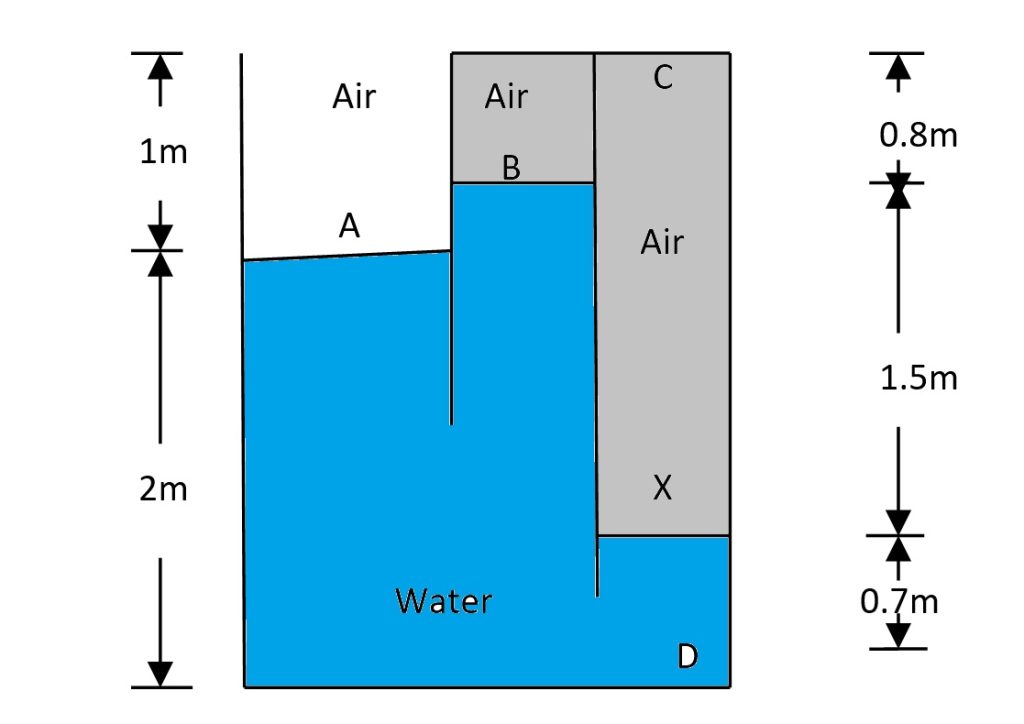Problem Statement
The tip of a glass tube with an internal diameter of 2mm is immersed to a depth of 1.5cm into a liquid with a specific gravity of 0.85. Air is forced into the tube to form a spherical bubble just at the lower end of the tube. Estimate the surface tension of the liquid if the pressure in the bubble is 200Pa.
Solution
Given:
- Radius of bubble (r) = 1mm = 0.001m
- Pressure inside bubble (Pi) = 200Pa
- Depth of liquid (h) = 1.5cm = 0.015m
- Specific weight of liquid (γ) = sp. gr. × γwater = 0.85 × 9810 = 8338.5Pa
- Surface tension (σ) = ?
Calculations:
Step 1: Pressure outside the bubble (Po):
Po = γ × h
Substitute values:
Po = 8338.5 × 0.015 = 125.07Pa
Step 2: Excess pressure inside the bubble (P):
P = Pi – Po
Substitute values:
P = 200 – 125.07 = 74.93Pa
Step 3: Surface tension (σ):
P = 2σ / r
Rearrange for σ:
σ = P × r / 2
Substitute values:
σ = 74.93 × 0.001 / 2
σ = 0.0375 N/m
Result:
The surface tension of the liquid is 0.0375 N/m.
Explanation
This problem calculates the surface tension of a liquid based on the principles of hydrostatics and surface tension:
- Pressure outside the bubble: The external pressure is calculated using the depth of the liquid and its specific weight.
- Excess pressure: The difference between the internal and external pressures determines the excess pressure inside the bubble.
- Surface tension: Using the relation P = 2σ / r, the surface tension is computed.
This solution demonstrates the use of fluid mechanics principles to measure surface tension in practical scenarios.






